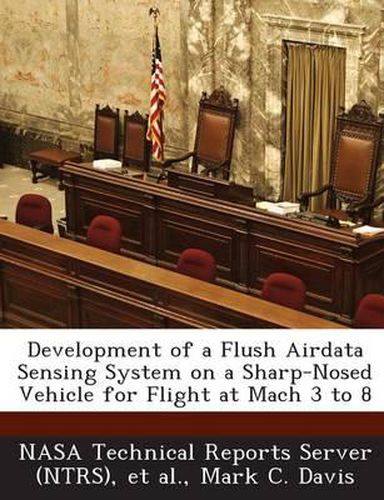Readings Newsletter
Become a Readings Member to make your shopping experience even easier.
Sign in or sign up for free!
You’re not far away from qualifying for FREE standard shipping within Australia
You’ve qualified for FREE standard shipping within Australia
The cart is loading…






NASA Dryden Flight Research Center has developed a flush airdata sensing (FADS) system on a sharp-nosed, wedge-shaped vehicle. This paper details the design and calibration of a real-time angle-of-attack estimation scheme developed to meet the onboard airdata measurement requirements for a research vehicle equipped with a supersonic-combustion ramjet engine. The FADS system has been designed to perform in flights at Mach 3-8 and at -6 deg - 12 deg angle of attack. The description of the FADS architecture includes port layout, pneumatic design, and hardware integration. Predictive models of static and dynamic performance are compared with wind-tunnel results across the Mach and angle-of-attack range. Results indicate that static angle-of-attack accuracy and pneumatic lag can be adequately characterized and incorporated into a real-time algorithm.
$9.00 standard shipping within Australia
FREE standard shipping within Australia for orders over $100.00
Express & International shipping calculated at checkout
NASA Dryden Flight Research Center has developed a flush airdata sensing (FADS) system on a sharp-nosed, wedge-shaped vehicle. This paper details the design and calibration of a real-time angle-of-attack estimation scheme developed to meet the onboard airdata measurement requirements for a research vehicle equipped with a supersonic-combustion ramjet engine. The FADS system has been designed to perform in flights at Mach 3-8 and at -6 deg - 12 deg angle of attack. The description of the FADS architecture includes port layout, pneumatic design, and hardware integration. Predictive models of static and dynamic performance are compared with wind-tunnel results across the Mach and angle-of-attack range. Results indicate that static angle-of-attack accuracy and pneumatic lag can be adequately characterized and incorporated into a real-time algorithm.